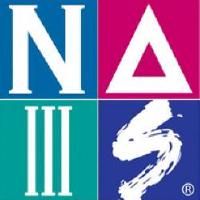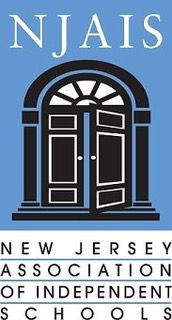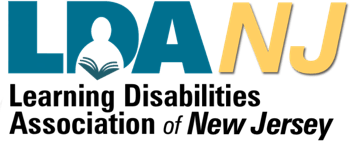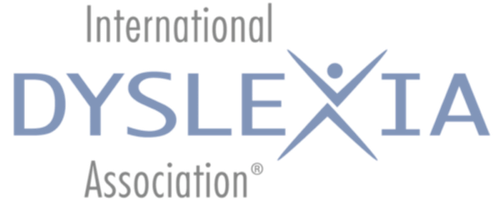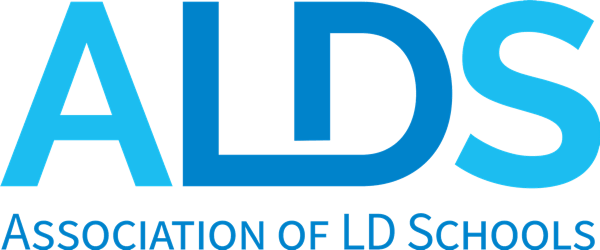Dear Community,
Continuing our series spotlighting Dyslexia Awareness Month, one strength of our dyslexic learners is highlighted today, visuospatial awareness. Beginning with the work of Dr. Samuel T. Orton (1925), to neurologist Noman Geschwind (1982), to dyslexia scholars today (Eide & Eide, 2012; Shaywitz, 2016; Wolf, 2020), dyslexia has long been associated with visual-spatial strengths; strengths particularly aligned with art, music, engineering, and architecture, to name a few.
Described as a “superpower” of students with dyslexia, visuospatial awareness provides a creative advantage over neurotypical peers (Eide & Eide, 2012). Marked by non-verbal thought processes that allow for the manipulation or examination of visual images in one’s mind while seeing things from all angles, visuospatial awareness integrates both visual and spatial information quickly and efficiently, leading to innovation, creativity, and alternate ways to gather knowledge and enhance learning (Shaywitz, 2016). Visual-spatial thinking helps students find meaning in the shape, size, orientation, location, direction, or trajectory of objects and their relative positions and uses the properties of space as a vehicle for structuring problems, finding answers, and expressing solutions. Time and again, I have heard students say, “I just can see it differently,” when asked about a particularly novel approach to problem-solving they came up with. The capacity to “see” things differently points to our students’ visuospatial thinking strengths.
Parents, recognizing our students’ strengths are integral to fostering positive self-identity, and to do what our mission calls us to do, “build on [students’] aptitudes, and strengthen their self-awareness and self-esteem.” Our students’ challenges are real and there are many days when both you and your child may feel disheartened. However, our students are also full of potential with many strengths to recognize and celebrate.
Dear Community,
October is known worldwide as Dyslexia Awareness month and as such this letter highlights a particular student profile that is near and dear to my heart as I have seen over the last two and a half decades working with students who learn differently. These students frequently are overlooked in traditional schools when determining appropriate interventions and services–students who may struggle to read and write (e.g. dyslexia) while also struggling with attention and working memory (e.g. ADHD). A true testament to The Craig School is our ability to tease out our students' unique strengths and challenges to individualize a structured literacy program that best suits their needs.
Most of you may know that Attention Deficit Hyperactivity Disorder (ADHD), a developmental impairment of the brain’s self-management system, and its executive functions, affects approximately 11% of school-aged children (CDC). This can present as daydreaming, absent-mindedness, fidgeting, restlessness, or a combination of these traits, among others. We also know that about 20% of school-aged children struggle with reading, writing, and spelling significantly enough to meet the diagnostic criteria for dyslexia (IDA). What is interesting is to notice where the two meet. For students diagnosed with ADHD as the primary barrier to their educational progress, anywhere between 8% and 39% have a secondary diagnosis of a reading disability.
The cognitive profile of students with co-occurring ADHD and dyslexia is unique from students with dyslexia alone as social and emotional skill deficits are present in addition to academic (phonological, orthographical, and comprehension) deficits. Many studies confirm a cognitive relationship between dyslexia and ADHD diagnoses pertaining to executive functions, which include attention, inhibition, planning, organizing, time perception, and working memory. For example, poor reading performance may be attributed to deficits in sustained attention, working memory, planning, organizing, and processing speed. Additionally, there may be a significant difference in the reading speed between those with ADHD and neuro-typical students. This may point to underlying issues concerning working memory and its role in processing speed, reading fluency, and spelling accuracy.
At The Craig School, our teachers use instructional strategies to address working memory deficits, like graphic organizers, summary strategies, and task sequencing guides. However, these tools will not address reading fluency. A structured literacy program, found at The Craig School with our extensive use of Orton-Gillingham methodology, coupled with executive function skill development allows us to better meet the needs of our students. Working memory, processing speed, and sustained attention, for example, are woven through our curriculum from second through twelfth grade. Teachers at The Craig School are immersed in evidence-based instructional practices and programs designed to bring out the best in students who learn differently and are incredibly committed to doing the hard work that is necessary to see each student reach success.
Fluency is the gateway to reading comprehension and comprehension is the ultimate goal of reading.
Reading comprehension provides a path for our students to identify simple facts presented in texts, make judgments or evaluate the contents of texts, and finally, connect one text to other texts or situations; simply, it allows our students to make meaning from what they read. Structured literacy programs, like what we provide at The Craig School, address fluency instruction distinctly from the components of structural language that we, as parents and educators, may hear spoken of often, such as phonemes, morphemes, syntax, and semantics. Fluency, however, is much more complex than “automaticity” or decoding a word at a steady rate without any additions, substitutions, or omissions.
Reading fluency, has three major components, and each needs attending to, a) accuracy, b) rate of reading, and c) prosody. When students can decode unfamiliar words accurately, use context to help correct errors in word reading, and have mastered a number of sight words, they are said to be accurate readers. Rate of reading can be defined as one’s ability to recognize words automatically or almost automatically, read at a sufficient rate per minute, and to maintain rate or adjust rate in accordance with increasingly more difficult texts. Finally, prosody, or expression, is how the student attends to punctuation, it is a measure of phrasing, intonation, and timing, and it is the vehicle in which students express and communicate the meaning of the text.
Fluency is measured through informal and formal means, such as curriculum-based measurements (CBM) like the Hasbrouck-Tindal Oral Reading Fluency (ORF), or a norm-referenced assessment, like the Group Reading Assessment and Diagnostic Evaluation (GRADE), both among evaluation tools used at The Craig School. The benefit of an informal assessment is screening and progress monitoring. When used as progress monitoring tools, the extent to which the student is improving from the instruction and intervention is measured. Having a clearer picture of the student’s progress allows our reading and Orton Gillingham teachers to make adjustments to programs and goals or to determine if they should stay the course. It allows us to be responsive to the instructional needs of our students in a thoughtful and timely manner. Norm-referenced assessments, such as the GRADE, include measures of reading comprehension, language comprehension, semantics, decoding, cipher knowledge, and letter knowledge and give us benchmarks from which to build a comprehensive, customized reading program.
Once we have a gauge of where the student is at in terms of reading fluency, the instructional program shifts to the students’ specific needs so that the students begin to read with ease and are able to devote all of their attention to comprehension. For students with dyslexia, a great amount of energy is placed on decoding or word identification. Little is left for understanding what was read. Moreover, a reduced rate of reading increases subsequent challenges with comprehension. However, as Mrs. Cozine wrote in last week’s newsletter, “fluent reading increases comprehension but parents, what you need to realize is, if we push students to read faster than they can comprehend, it is counterproductive.” Reading and Orton Gillingham teachers engage in a delicate dance to balance all five core components of reading—phonemic awareness, phonics, fluency, vocabulary, and comprehension (National Reading Panel) and to do so in a manner that is uniquely suited to the needs of the individual student.
Kindly, I ask you to continue our parent-school partnership by making the space and time for your student to read aloud to you at home. Fluency takes practice and the best practice is through oral reading. You, too, should read aloud to your student as explicit modeling of fluent reading (e.g., “I do, We do, You do” method) is one of the most effective ways of improving reading fluency (Chard, Vaughn, & Tyler, 2002). Don’t forget the power of positive and meaningful feedback as an effective tool as well. Fluency practice applies not only to our students in the lower school but also to our middle and high school students. Teens may improve their fluency through listening to an adult read a text aloud to model fluent reading, by reading along with an audiobook, or by partner-reading when studying for an upcoming test.
By opening the door to fluency, our students explore a new world of understanding and are able to benefit from, and perhaps even learn to enjoy, the process of reading, resulting in higher levels of student engagement and motivation.
October is known world-wide as Dyslexia Awareness month and as such this letter highlights a particular student profile that is near and dear to my heart as I have seen over the last two decades working with students who learn differently, that these students frequently are overlooked in traditional schools when determining appropriate interventions and services. A true testament to The Craig School is our ability to tease out the unique strengths and challenges of our students to individualize a structured literacy program that best suits their needs.
Most of you may know that Attention Deficit Hyperactivity Disorder (ADHD), a developmental impairment of the brain’s self-management system, its executive functions, affects approximately 11% of school-aged children (CDC). This can present as daydreaming, absent-mindedness, fidgeting, restlessness, or a combination of these traits, among others. We also know that about 20% of school-aged children struggle with reading, writing, and spelling significantly enough to meet diagnostic criteria for dyslexia (IDA). What is interesting is to notice where the two meet. For students diagnosed with ADHD as the primary barrier to their educational progress, anywhere between 8% and 39% have a secondary diagnosis of a reading disability. The cognitive profile of students with co-occurring ADHD and dyslexia is unique from students with dyslexia alone as social and emotional skill deficits are present in addition to academic (phonological, orthographical, and comprehension) deficits. Many studies confirm a cognitive relationship between dyslexia and ADHD diagnoses pertaining to executive functions, which include attention, inhibition, planning, organizing, time perception, and working memory. For example, poor reading performance may be attributed to deficits in sustained attention, working memory, planning, organizing, and processing speed. Additionally, there may be a significant difference in the reading speed between those with ADHD and neuro-typical students. This may point to underlying issues concerning working memory and its role in processing speed, reading fluency, and spelling accuracy.
At The Craig School, our teachers use instructional strategies to address working memory deficits, like graphic organizers, metacognitive skill development, and using summary strategies. However, these tools will not address reading fluency. A structured literacy program, found at The Craig School with our extensive use of Orton-Gillingham methodology, coupled with executive function skill development allows us to better meet the needs of our students. Working memory, processing speed, and sustained attention, for example, are woven through our curriculum from second through twelfth grade.
A parent recently remarked speaking of her child who has been diagnosed with both ADHD and dyslexia, “Like many students with learning differences, the public schools have beaten him down and given up on him…and he knew it!” Teachers at The Craig School are immersed in evidence-based instructional practices and programs designed to bring out the best in students who learn differently and are incredibly committed to doing the hard work that is necessary to see each student reach success.
“Speaking is natural, and reading is not. Reading is an acquired act, an invention of man…” (Shaywitz, 2003).
As most of you will attest, reading does not come naturally, easily, or incidentally for countless children. It is a tough hill to climb that takes patience, time, and tenacity. Through decades of research, we understand that dyslexia can vary widely in students from a phonological deficit, orthographic deficit, a naming-speed deficit, or a combination of one or more of these challenges. Additionally, adding on processing speed, working memory, rapid automatic naming, and visual-verbal paired-associate learning challenges, the complexity increases exponentially and the need to use a proven, evidence-based approach is more critical than ever before.
The extraordinary level of expertise among our faculty in the Orton Gillingham program has benefited countless students over four decades. Known as the “Gold Standard” in literacy instruction for language-based learning differences, in particular dyslexia, this signature program at The Craig School is multi-sensory, language-based, sequential, cumulative, and flexible. It is not a scripted program, rather it is diagnostic and prescriptive in nature allowing our teachers the ability to customize and individualize each student’s Orton Gillingham program. Orton-Gillingham is not whole-word reading. Whole-word, a typical literacy practice found in many schools, in its simplest form is the act of teaching students to read by sight, memorization, and context. Unfortunately, these instructional practices remain in schools around the country, even though the science of reading clearly refutes their efficacy. What is clear is that structured literacy, of which Orton Gillingham is a prime example, is paramount for students with dyslexia.
Orton-Gillingham instruction directly takes on core weaknesses in phonological skills, decoding, and spelling, through explicit, systematic, and sequential instruction on phonemes, letter-sound relationships, syllable patterns, morphemes, vocabulary, sentence structure, paragraph structure, and text structure. Additionally, this approach has been described as direct instruction with a high level of student-teacher interaction, carefully selected, decodable words and nonsense words, text at the instructional level, rather than the frustrational level, and prompt, corrective feedback. In a typical school literacy program, many teachers will not have the background knowledge nor training, let alone the time, they need to implement with fidelity a research-based, valid, and reliable reading program. The teachers at The Craig School do not fall into that category. Rather, they are highly skilled and trained in the science of reading and understand a vast array of instructional strategies, approaches, and practices that align to the best of available research on teaching students with dyslexia how to read, write, and spell.
For more information on ways of giving or to make a donation online you can clicking here.
